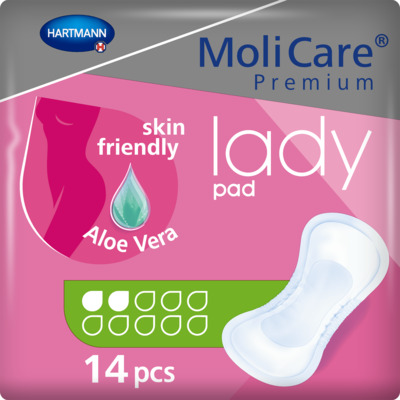Active living
Urinary Tract Infections: Are UTIs Contagious?
Anyone can be affected by urinary tract infections, from teenagers to the elderly, but are UTIs contagious? Urinary tract infections (UTIs) are common yet often misunderstood ailments affecting millions each year. In this article, we explore essential aspects of UTIs, including their causes, symptoms, and the crucial question: are UTIs contagious? We'll also examine the connection between UTIs and incontinence, providing insights on prevention and effective treatment strategies.

What is a UTI?
A urinary tract infection, also known as a UTI, is a type of infection that can impact any section of the urinary system, encompassing the kidneys, bladder, and urethra. Although commonly linked to Escherichia coli (E. coli) bacteria originating from the digestive tract, UTIs can be caused by other bacteria as well. These bacteria, if they move to regions where they are not typically found, can lead to infections. Understanding how UTIs develop and affect different parts of the urinary tract is crucial for effective management and prevention.
Types of UTIs
UTIs are categorised based on where the infection is located within the urinary tract:
Bladder (cystitis): This is the most frequent form of UTI, characterised by an urgent need to urinate, painful urination, and lower abdominal discomfort. The urine may appear cloudy. You can read our guide on how to control and prevent cystitis on our blog.
Kidney (pyelonephritis): When the infection spreads from the bladder to the kidneys, symptoms become more severe and include back pain, fever, and nausea.
Urethra (urethritis): Inflammation of the urethra presents as pain during urination and possible discharge.
Lower vs. Upper UTIs
Sometimes UTIs are referred to as lower or upper UTIs. Lower UTIs involve the bladder and urethra, whereas upper UTIs may involve the ureters and kidneys, potentially leading to more severe conditions like kidney damage or sepsis if left untreated. Prompt medical attention is advised if you suspect a UTI to avoid complications.
Urinary Tract Infections - Are UTIs Contagious
Symptoms of UTIs
- A frequent urge to urinate, even if the volume is minimal.
- An increased or sudden sense of urgency, which may be harder to control.
- A pain or discomfort in the lower abdomen or back.
- Cloudy or strong-smelling urine.
- The presence of blood in the urine, which may appear pink, red, or orange - view our guide on what the colour of your urine could mean for more info.
- General fatigue and fever.
Recognising the symptoms of a UTI early can lead to quicker treatment and less discomfort. Common symptoms include:
Addressing symptoms early with a healthcare provider can prevent the progression of the infection and reduce the risks of more serious health issues developing.
Are UTIs Contagious?
One common question is whether UTIs are contagious, and the answer is nuanced. You cannot catch a UTI from generally being around other people in the same way that you might catch a cold or flu, but the bacteria causing a UTI can be transferred between individuals during sexual contact. This distinction is crucial in understanding how UTIs occur and how to prevent them.
During sexual contact, bacteria can be transferred from the anal region into the urethra. Sexual activity, particularly without proper hygiene practices, can increase the risk of transferring bacteria that may lead to a UTI. Practices such as maintaining good personal hygiene and urinating before and after intercourse can significantly reduce this risk.
Risk factors
Certain factors increase the likelihood of developing urinary tract infections (UTIs). While anyone can get a UTI, some people are more prone due to their lifestyle, biological factors, or medical conditions. Key risk factors include:
Sexual activity: Engaging in sexual intercourse can introduce bacteria into the urinary tract, particularly for women due to their anatomical structure.
Gender: Women are more susceptible to UTIs. This means that bacteria can enter the urinary system more easily. For some women, vaginal oestrogen therapy may be recommended, particularly post-menopause, to help prevent UTIs. Oestrogen helps maintain the health of urogenital tissues, which can reduce the risk of infections.
Medical devices: The use of urinary catheters is a significant risk factor as they can provide a direct path for bacteria to enter the bladder and other parts of the urinary tract.
Diabetes: Individuals with diabetes have a higher risk of UTIs due to raised blood sugar levels. This can lead to a raised amount of sugar in the urine, which creates an ideal environment for infections to develop. Additionally, elevated blood sugar levels can impair the immune system, making it easier for infection to develop. Diabetes can also cause nerve damage, which may prevent the bladder from fully emptying, leading to an increased risk of infection. It is important for people with diabetes to manage their blood sugar levels effectively to prevent infections, diabetes and incontinence.
Chronic conditions: Conditions that obstruct the flow of urine, such as kidney stones, enlarged prostate, or spinal cord injuries, can increase the risk of UTIs by allowing bacteria to multiply in urine that remains in the bladder.

The connection between UTIs and incontinence
There is a notable link between urinary incontinence and an increased risk of UTIs. Incontinence can lead to incomplete emptying of the bladder, creating a breeding ground for bacteria. Additionally, devices used to manage incontinence, such as catheters, can also introduce bacteria.
Conversely, having a UTI can lead to temporary incontinence due to the bladder becoming swollen and irritated when infected, which may result in urine leakage. The inflammation can also cause bladder spasms, increasing the urgency to urinate and potentially leading to involuntary leakage.
Diagnosing UTIs
Early diagnosis is key to managing UTIs effectively. Healthcare providers typically begin with a urinalysis to check for signs of infection, such as the presence of white blood cells, bacteria, or blood. If needed, a urine culture may be performed to determine the type of bacteria causing the infection, which can guide antibiotic treatment.
Treatment
The primary treatment for UTIs is antibiotics. The type and duration of antibiotic treatment may vary based on the severity of the infection, the type of bacteria causing the infection and the patient's overall health. It is essential to finish the entire course of antibiotics prescribed, even if symptoms get better, to guarantee the complete elimination of the infection. Over-the-counter pain medication can help to relieve any discomfort.
Prevention
Alongside medical treatment, several self-care strategies can help alleviate symptoms and prevent future UTIs:
Hydration: Drinking plenty of fluids, especially water, helps dilute urine and ensures frequent urination, flushing bacteria from the urinary tract.
Eat a healthy diet: Giving your body the right nutrition helps it to stay healthy and fight off a lot of infections before they take hold.
Hygiene practices: Maintaining good personal hygiene, especially around the genital area. Wiping from front to back after using the toilet and urinating before and after sex can reduce the risk of bacterial transfer. When using incontinence pads, promptly change them when they become wet or soiled. MoliCare skin barrier cream can also help prevent skin irritation.
Avoid irritants: Avoiding irritants like harsh soaps or sprays, changing out of wet swimwear or gym clothing quickly, and not delaying urination can be beneficial. Also, limiting or avoiding caffeinated or alcoholic drinks can prevent the bladder from becoming irritated.
Proper posture can also help prevent UTIs. For those who struggle to empty their bladder fully, leaning slightly forward while sitting on the toilet can help. This position enables the bladder to empty more completely, reducing the chances of bacteria growing in leftover urine. It is also important to take your time when urinating and ensure the bladder is completely empty, even if you are in a hurry.
Choose cotton: Using cotton underwear and loose-fitting clothes can help keep the area around the urethra dry. Harmful bacteria grow better in moist conditions.
Those experiencing symptoms of a UTI—such as pain during urination, frequent urination, pelvic pain, or blood in the urine—should consult their healthcare provider. Additional symptoms that require immediate medical attention include high fever, chills, confusion, or pain in the lower back or side, which could indicate a more serious infection.
Recurring UTIs
Recurring UTIs are common and are often caused by underlying medical conditions, such as diabetes or vesicoureteral reflux, which cause urine to flow backward from the bladder towards the kidneys, increasing infection risks. Recurring UTIs are defined as two or more infections in six months or three or more in a year. It is very important to consult a healthcare professional to establish the cause of recurring UTIs in order to manage the condition effectively.
Sexual Health and UTI Risk
Sexually transmitted infections (STIs) can present with symptoms similar to those of a UTI, such as pain during urination. It’s important to differentiate between the two, as an STI may require different treatment. Practising safe sex, which includes using barrier methods of contraception and getting regularly tested for STIs, can help reduce the risk of both STIs and UTIs.
Stopping Urinary Tract Infections
In summary, UTIs are infections primarily caused by the migration of bacteria from the bowel to the urethra. While sexual activity can elevate the risk of developing a UTI, these infections are not sexually transmitted infections (STIs), nor are they contagious. However, due to similar symptoms, misdiagnosis of STIs can occur. Effective prevention of UTIs involves maintaining proper hygiene, urinating after sexual activity and staying hydrated to ensure urinary health.
Learn more about the differences between bacterial vs viral infections.

FAQs
Can cranberry juice cure a UTI?
Some studies show that cranberry juice may prevent UTIs, but there is no evidence that drinking cranberry juice can cure a UTI once it is already established.
Can a man give a woman a UTI?
No, a man cannot give a woman a UTI. While sexual activity can sometimes lead to a woman developing a UTI due to bacteria being moved around, it is not transmitted from one person to another.
Are UTIs contagious from toilet seats?
No, UTIs are not contagious from toilet seats. The bacteria that cause UTIs typically come from one's own body, not from external surfaces. However, there is still an uncommon potential here - as you normally sit over the hole, the urethra doesn’t normally come into direct contact with the seat surface, but toilet water can sometimes be splashed up into the urethral area which can obviously be contaminated with bacteria.
How is a UTI contracted?
A UTI is contracted when bacteria, usually from the bowel, enter the urinary tract through the urethra and begin to multiply in the bladder. Risk factors include sexual activity, certain types of birth control, and poor general hygiene.
Hagerty, J. A., (2016) Vesicoureteral Reflux (VUR). Nemours Kids Health. [online] Available at: https://kidshealth.org/en/parents/vesicoureteral-reflux.html [accessed 05/06/24]
Cooper, B., (2024) Bacterial vs. Viral Infection: Tips for Identification and Treatment. Healthnews. [online] Available at: https://healthnews.com/health-conditions/immunity-infections/bacterial-vs-viral-infection/ [accessed 05/06/24]

MoliCare® Premium Men Pad 4 Drops
<h2>Comfortable and absorbent</h2> <p>Why MoliCare for men? Hers are some of the key features of the MoliCare® Premium Men Pads from Hartmann:</p> <ul> <li>Discreet and comfortable</li> <li>Fits the male physique</li> <li>3-layer absorbent core</li> <li>Fast-absorbing system</li> <li>Anti-leakage cuffs</li> <li>Odour neutralisers</li> <li>Wide adhesive strip</li> <li>Skin-friendly</li> </ul> <p>With an affordable price and great quality guarantee, you cannot regret choosing MoliCare® Premium Men Pad 4 drops, equipped with anti-leak cuffs, and 14 pieces per bag.</p> <h2>Slim and discreet under clothing</h2> <p>MoliCare® Premium MEN Pads offer reliable support for men dealing with bladder weakness. Whether it's stress incontinence or urge incontinence, these pads for men are designed to provide a discreet and quick solution on the go. Simply place the pad before applying your underwear and secure it with the adhesive strip for worry-free protection. MoliCare® Premium MEN Pads offer full coverage for men facing very light to moderate bladder weakness.</p> <h2>Leakage protection for men</h2> <p>MoliCare® understands that each individual's incontinence needs are unique. That's why our incontinence products, including MoliCare® Premium MEN Pads, are available in different absorbency levels. You can find the perfect fit and protection for your specific requirements.</p> <h2>Reliable and soft on the skin</h2> <p>Our body-shaped absorbent pads are designed to deliver dependable and skin-friendly incontinence protection every day. Experience discreet comfort with the soft, cotton-like materials and the added benefit of an odour neutraliser, ensuring you feel fresh and confident throughout the day.</p> <h2>Fast delivery to your home</h2> <p>At HARTMANN Direct, we ensure a fast delivery service for all our products. Enjoy free delivery on orders over £50, making it convenient and hassle-free to receive the incontinence products you need. Our dedicated customer care team is here to discuss your incontinence product needs and answer any questions you may have. Call us today on 0800 028 9470 to experience the comfort and confidence that MoliCare® Premium MEN Pads can provide.</p>
MoliCare® Premium Lady Pad 2 Drops
<h2>Skin Friendly Pant Liners</h2> <p>For women that experience slight incontinence and bladder weakness, across different age groups, it can be a challenge to find the right bladder weakness product that is easy to apply and wear without the worry of potential leakages. Fortunately, we understand this approach, hence why we are happy to offer our MoliCare® Premium Lady Pad 2 drops, that is skin-friendly, Aloe Vera applied, and comes with 14 liners per bag.</p> <h2>Slim and discreet liners</h2> <p>Whether dealing with stress incontinence or urge incontinence, these panty liners offer a discreet and easy solution on the go. Simply place the pad in your underwear and secure it with the adhesive strip for all-round protection. Available in different absorbency levels, MoliCare® bladder weakness products cater to all levels of bladder weakness, ensuring secure care.</p> <h2>Control Bladder Weakness</h2> <p>Enjoy the benefits of these body-shaped absorbent panty liners, designed for women with bladder weakness. The pads offer discreet, reliable protection with features including odour control and fast absorption.</p> <p>With a wide adhesive strip, you can comfortably fix the pad in your regular underwear, providing secure and comfortable fixation. The pads are skin-friendly, featuring soft, breathable materials, including foam cuffs, and a top sheet treated with Aloe Vera.</p> <p>Keeping your skin healthy is a priority, which is why MoliCare® Premium Lady Pads have a skin-neutral pH value of 5.5 and an antibacterial finish. They are also dermatologically tested, offering peace of mind.</p> <h2>Buy pant liners online</h2> <p>Never worry about running out with our convenient order service and fast delivery direct to your door. Enjoy free shipping on orders over £50.</p> <p>If you need assistance, our professional customer service team is here to support you in choosing the right product. Reach out to us today at 0800 028 9470 and experience the comfort and reliability of MoliCare® Premium Lady Pads.</p>
MoliCare® Pad 3 Drops
<h2>Incontinence pads for men and women</h2> <p>Protect yourself against slight bladder weakness with the MoliCare® Pad 3 drops. Suitable for men and women, offering an ideal solution to regain control and live your active life without interruptions. Slimline, discreet, and contoured to fit your body, these incontinence pads ensure a comfortable and barely noticeable feel, providing exceptional dryness and protection for slight incontinence.</p> <p>Crafted with soft, skin-friendly fabric and a polyester backsheet, these incontinence pads ensure you can confidently go about your day, secure against minor leaks. The wide adhesive fixing strip keeps the pad securely in place, while the super absorbent core wicks moisture away from your skin. The elastic anti-leak edging adds an extra layer of reassurance, and odour neutraliser keeps you feeling fresh and confident. With the MoliCare® Pad 3 drops, you no longer need to let slight or occasional incontinence hold you back from enjoying life to the fullest. Simply adhere the pad to your underwear, and you will barely feel the difference.</p> <h2>Price match promise</h2> <p>Experience convenience with our fast delivery service, bringing your chosen products directly to your door. At HARTMANN Direct, we offer a price match promise and free delivery for orders over £50, making sure you receive both quality and value.</p> <p>If you need further assistance, our customer care team is here to help. Give us a call today at 0800 028 9470, and we'll find the perfect incontinence product tailored to your needs. Take charge of your life with the reliable and comfortable protection of MoliCare® Pad 3 drops. Say goodbye to worries and hello to an active and confident lifestyle.</p>
